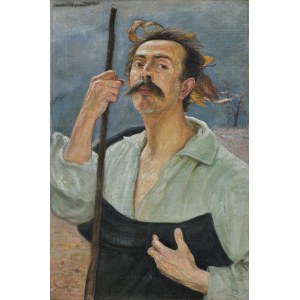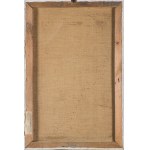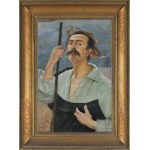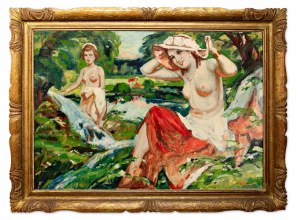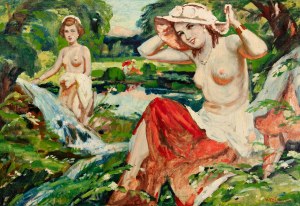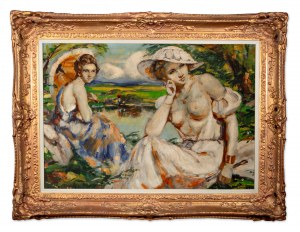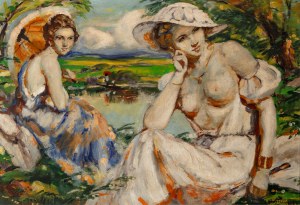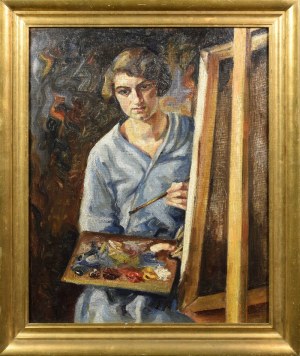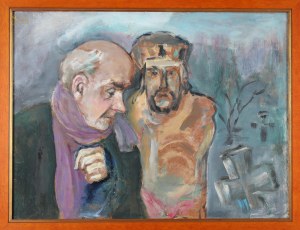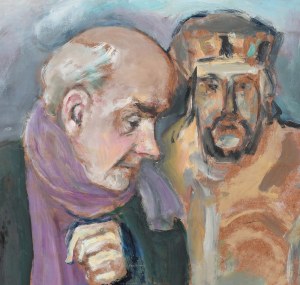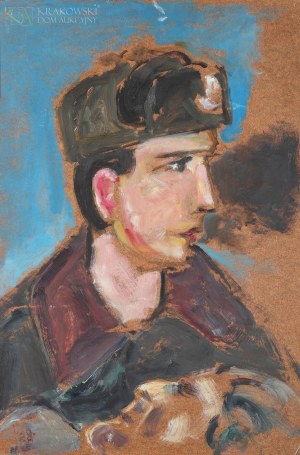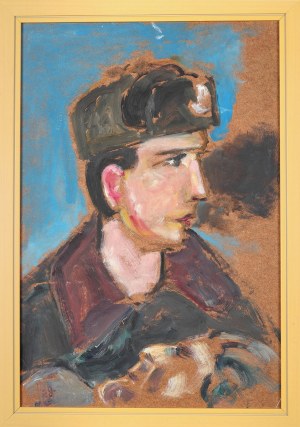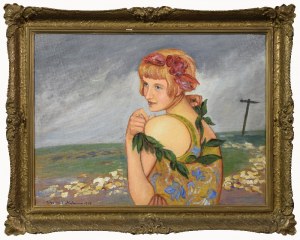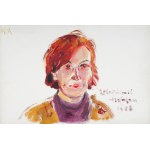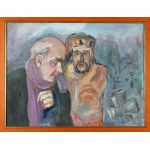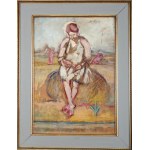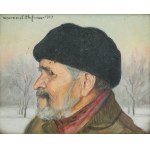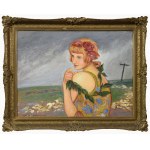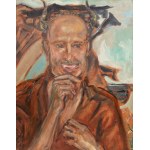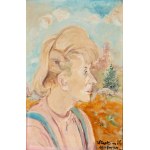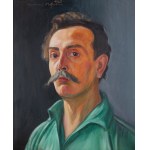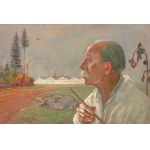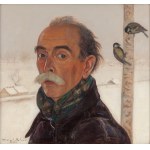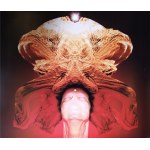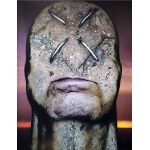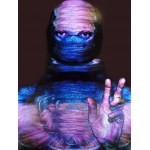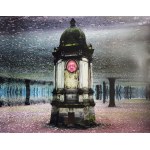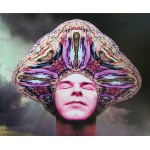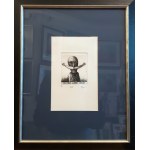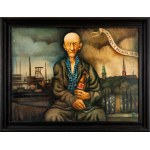80.0 x 53.7cm - oil, canvas signed l.g.: Wlastimil Hofmann | Paris 1920
On the back, on the left loom strip, exhibition sticker of TPSP in Poznań (print, ink): Towarzystwo Przyjaciół Sztuk Pięknych | Poznań, Plac Wilhelmowski 18 | Reg. of paintings no. current. 488 | Artist's name: Wlastimil Hofmann | Title of painting(s): Self-Portrait | Sale Price:
The featured Self-Portrait shows the painter with his chin slightly raised and his eyes gazing at the viewer. In his right hand he holds a long stick, characteristic of hikers. On his head is a wreath of dry leaves, and his chest is wrapped in a black cloak. Hofman's art, and especially its symbolic overtones, was strongly influenced by his professor at the Academy of Fine Arts in Krakow, Jacek Malczewski. As with Malczewski's paintings, Hofman's work also offers many possibilities for interpretation. The symbolic content and allegories contained in his canvases allow one to explore the artist's soul.
In keeping with the symbolic trend, the painter often took up the theme of life as a journey, which begins at birth. The stick wielded by the artist allows us to see him as a wanderer. Born in Prague, he moved with his family to Krakow at the age of eight. At the turn of the century, he studied in Paris, then returned to Krakow, and then went to Prague again. In 1917 he returned to Krakow with the love of his life, who at the time was still his cousin's wife. After Poland's independence and the fall of Austria-Hungary, the Czechoslovak-Polish conflict over borders began. Both Ada and Hofman were treated as strangers, plus their informal relationship compounded the hostility. Hofman, who had Polish-Czech roots, and Ada, a Czech, were treated as spies. They were often followed by the police and their apartment was searched. A disappointing life in Krakow prompted them to leave again, this time for Paris.
Hofman is considered a continuator of the symbolism shaped by Jacek Malczewski, both in terms of iconography and compositional solutions. Thus, as in Malczewski's art, the subject matter of the painting, carrying deep content, also played a major role in Hofman's work. And as in Malczewski's work, the self-portrait was a form of representation of the Artist's fate and mission. The pose in which Hofman depicted himself, with his hand folded over his heart and a wreath on his head, may allude to the image of the bards, who had the good of the nation at heart. However, the image may also have decidedly personal overtones. During his stay in Paris, in May 1920, the artist's father died. The presented self-portrait may therefore also be a form of farewell to the man closest to him. This is because the Hofmans could not come to the funeral. They returned to Poland only two months later. A black coat wraps around the artist's chest like a kir. Shrouded in dark clouds, the sky and the hand on his heart may signify the great pain Hofman is struggling with. The longing expression on his face, the withered wreath on his head, and the empty landscape with a tree stripped of leaves, may indicate a final farewell.
♣ A fee will be added to the auctioned price in addition to other costs, based on the right of the artist and his heirs to receive remuneration in accordance with the Law of February 4, 1994 - on Copyright and Related Rights (droit de suite).
Wlastimil Hofman / Vlastimil Hofmann (Prague 1881 - Szklarska Poreba 1970) studied at the School of Fine Arts in Cracow - initially under Florian Cynk, later also under Jan Stanislawski, Leon Wyczółkowski and Jacek Malczewski. In 1899-1902 he still studied with Jean Léon Gérôme at the École des Beaux-Arts in Paris. During World War I he stayed in Prague and Paris; from 1920 he lived permanently in Cracow. He exhibited a lot; he belonged to many creative associations - he was a co-founder of the "Group of Five" (1905) and the "Group of Zero" (1908), a member of the Association of Czech Artists "Manes", and from 1911 a member of the Polish Artists' Society "Sztuka". During World War II, through the USSR and Turkey, he made his way to Jerusalem, from where he returned to Krakow in 1946. Since 1947 he lived permanently in Szklarska Poreba. Hofman painted primarily fantastic-symbolic compositions with folk motifs, as well as genre scenes, portraits and landscapes. His paintings, despite close analogies and connections with the art of Malczewski, are always distinguished by their individual character, style and mood.
Recently viewed
Please log in to see lots list
Favourites
Please log in to see lots list



